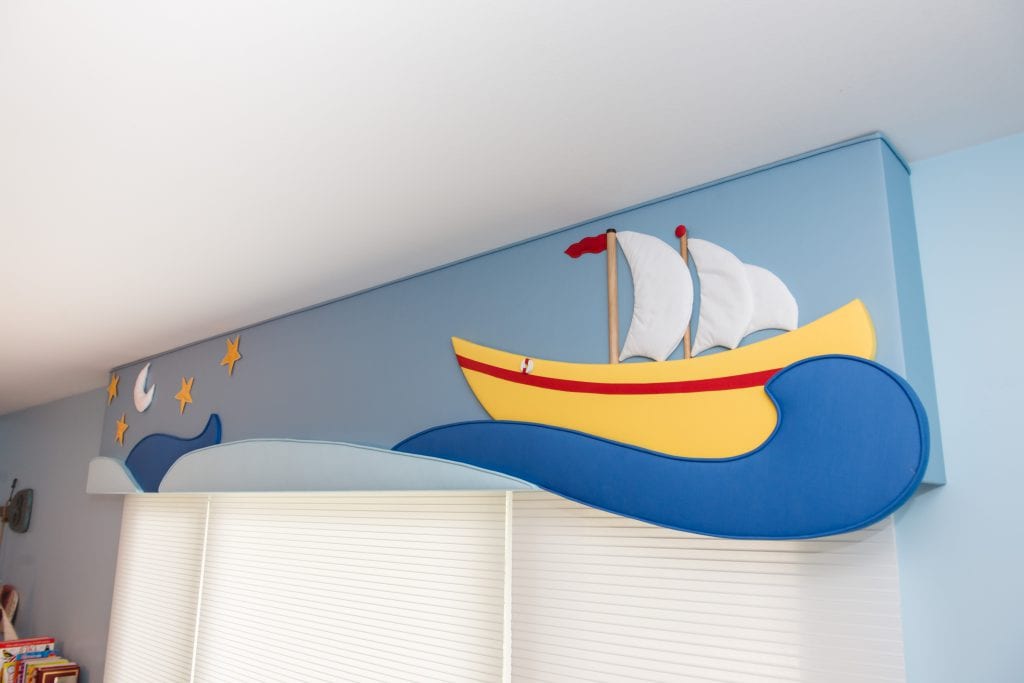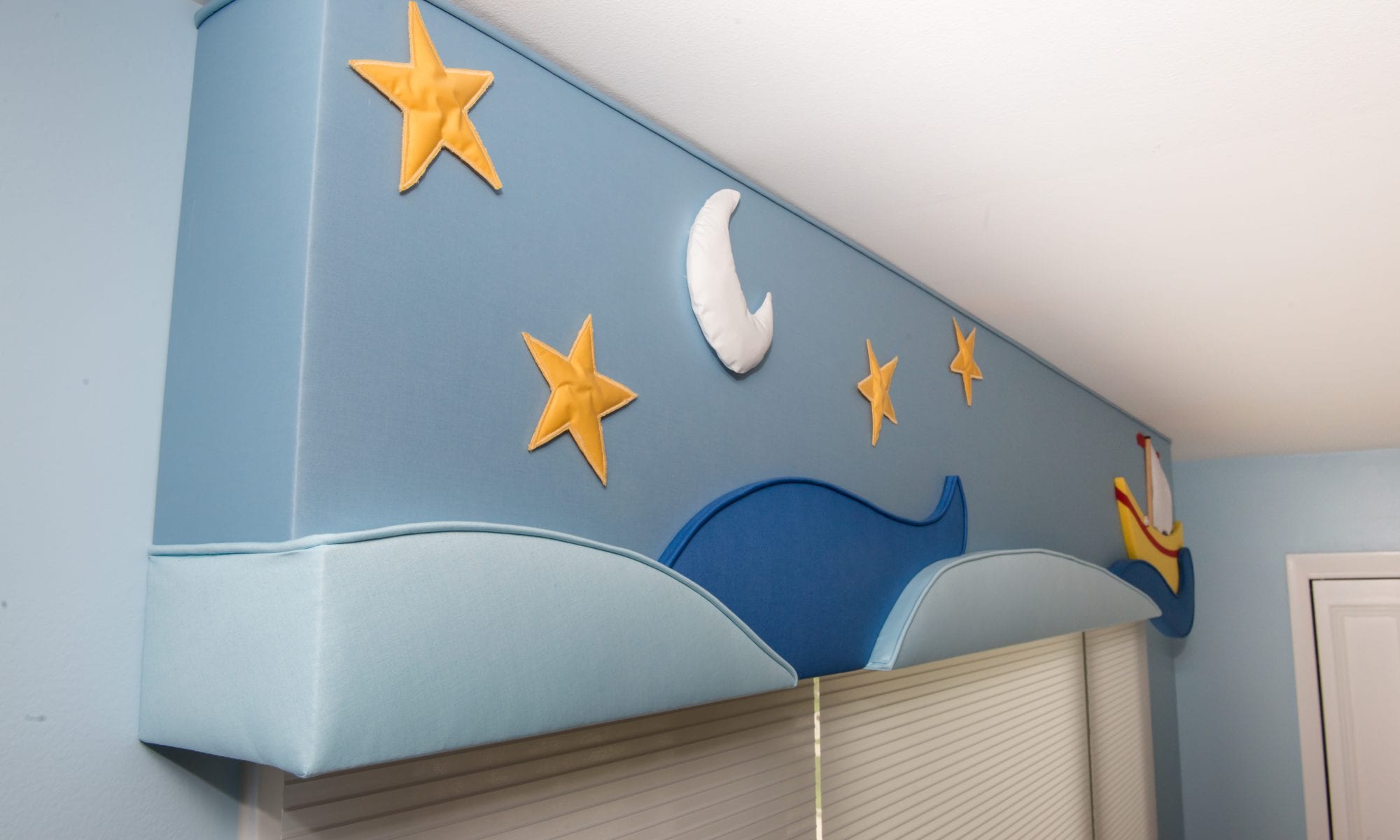When to Use a Cornice
7 Reasons to Consider a Cornice
- A cornice will often times be the most economical top treatment, because it requires much less fabric than other top treatments.
- Less fabric required means you can often use a more expensive fabric. This can make a window more unique, luxurious, and can give a high “wow” factor.
- A cornice is a great place to add inserts of contrasting colors and patterns, shirring, pleats, and trims.
- Construction allows fabrics to be used in ways not possible when draping (for example, diagonally).
- Shaping options gives the capability of increasing depth, making the use of larger prints possible without blocking the beautiful window view. (i.e. making the sides longer and the center shorter can make a larger repeat look right, instead of cutting off a necessary part of the pattern).
- Upholstered gives more sound absorption to a room. (with today’s hardwood/tile floors, stone fireplaces, high ceilings, extensive granite countertops and cabinetry, and large expanses of glass, plus a 96” TV blaring, it’s no wonder people say, “My house is so noisy!” A small area rug under the cocktail table isn’t going to help. A cornice across a 108” window will do more.)
- Cornices are easy to measure for and easy to install!



4 Common Mistakes with Cornices…So You Can Avoid Them!
- Making them too short (depth). As with any treatment, the size should be proportional to the window. Larger windows need deeper cornices.
- If shaping, forgetting the short point needs to be deep enough to cover anything underneath such as trim, rods, shade tops, etc. that shouldn’t show below the cornice.
- If doing sections on a cornice (especially with contrasting colors or patterns), make sure the sections line up correctly with any window mullions, trims, side panels, etc. One way to make sure you don’t end up with unintentional “busyness” is to take a photo of your window, print it, and then sketch your cornice design on it. It will help you see where possible conflicts would be and also what proportion looks good. It can then be your guide to taking the correct measurements you need to have it come out perfect.
- Don’t give only outside width when ordering. To avoid mistakes, always include the inside width needed to clear any trims, shades, brackets, rods, etc. It’s especially important if you want the cornice to fit tighter to the trim. There is no “give” on an upholstered board. Same on inside projection. Make sure a drapery or shade will clear and not rub against the cornice board when it moves.
Contact Custom Creations - 800.325.8025
Looking to add cornices to your design repertoire? Check out our style guide and download the order form today!




 Sign Out
Sign Out
 View Cart
View Cart




